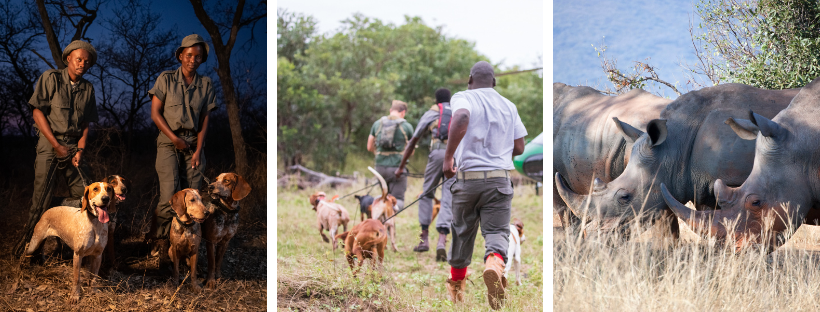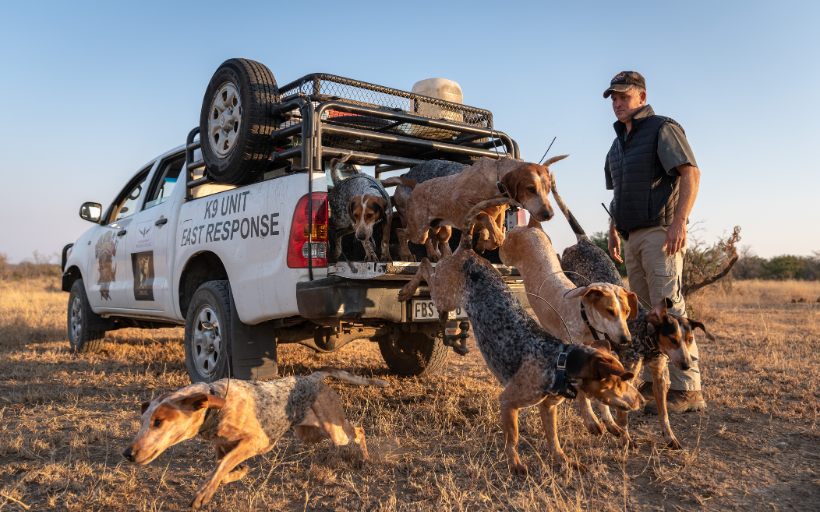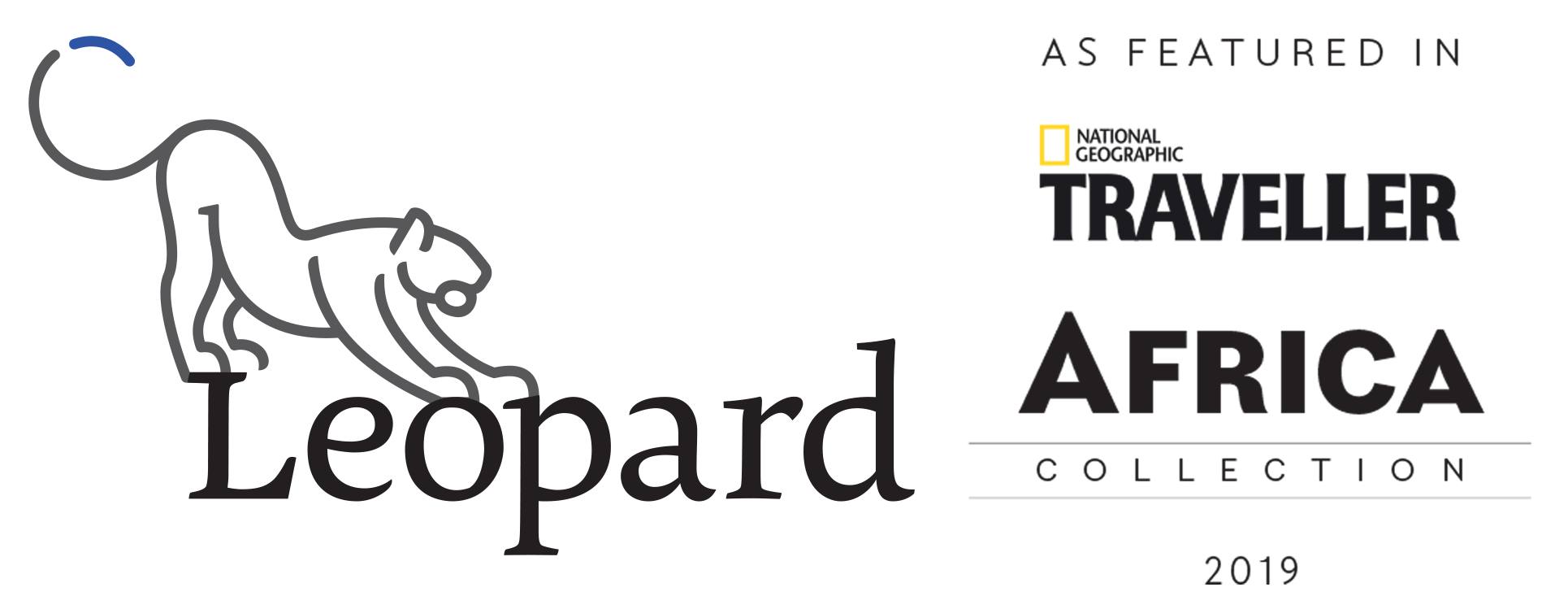How Texan-bred dogs in Africa are saving rhinos
If you’ve ever wondered how South Africa’s precious wildlife is kept safe from poachers it may put a smile on your face to know that besides brave, well-trained rangers, man’s best friend is doing an excellent job too.
We chatted with Johan van Straaten, Dog Master and head trainer at the Southern African Wildlife College’s K9 Unit which deploys dogs to sniff out and track the bad guys. The dog unit was established in 2015 and since then the team has arrested around 200 poachers and confiscated 100 rifles. In most cases, the arrests were made before the poachers managed to injure or kill any animals. Johan explained that although on-leash tracker dogs, like Belgian Malinois, are commonly used by counter-poaching teams the SAWC’s K9 team specialises in training free-running pack dogs. Dogs like blue ticks, beagles and bloodhounds are used and in 2018 crosses of black and tan and redbone breeds were brought in from Texas.

Johan and the team use positive reinforcement to train the dogs, who love their work.“When we’re operating in Kruger, we use the SanParks Squirrel chopper which can fit six dogs. All the dogs get really excited when they hear it approaching. After a while, the puppies and hounds that haven’t been operational yet (haven’t been in the chopper) calm down, but the dogs that have been out in the field remain excited. When it’s time to go, they drag us to the chopper.”
Each dog has its own personality and even likes to choose its own place in the chopper. Two of the dogs like to lie down on the floor, one likes to lick the handlers. “Benji, an older boy, likes to sit on the seat near the door.” The flights can take up to 30 minutes to reach the area where rangers on foot have detected poachers and the hounds often fall asleep in the air. But as soon as the rotors start to slow down, the hounds are up, alert and ready for action.
The canines are fitted with GPS collars so that they can be tracked from the air using Garmin devices, as they run through the bush following the scent trail. “Although each dog could do the job on his or her own, like humans, each one has its own strengths and they work together like a rugby team,” says Johan.

In combining well-trained field rangers, aerial assistance and the use of free-running dogs, success rates have increased from 3 – 5 % without hounds, to between 60 – 70% with the use of both on-leash and free-tracking dogs. Dogs on leashes scour the ground to pick up a scent (with armed, tactical rangers) and then they are supported by a free-tracking pack that is put onto the scent. These dogs can track over rough terrain far quicker than humans. Once they have tracked down the poachers, they keep them at bay until ranger support is deployed to arrest them.
There are still challenges in the justice system when it comes to prosecuting poachers, however, the dogs are doing a great job at protecting vulnerable species, such as South Africa’s rhinos.
If you’d like to see rhinos in Africa (or the rest of the Big Five) on an unforgettable safari adventure, chat to us at [email protected]. We’d love to help you tailor a bespoke trip to the bush where you can unwind and connect with nature.
Happy travelling,
The Leopard Team
P.S. If you’d like to support the conservation work of the SAWC’s K9 Unit, which is currently fundraising for a Healthcare Fund towards the K9 unit’s medical cost for 2023, visit https://wildlifecollege.org.za/k9-unit
Sign up for more newsletters like this here: https://mailchi.mp/2e4afa50d15f/leopard


